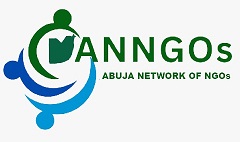- Give notice of the meeting in writing.
- Do this in due time. It is advisable to give 21 days notice for a General Meeting and seven days for a Board Meeting.
-
- Sent the agenda (list of items to be discussed/resolved) along with the notice, as it allows the members to prepare for the meeting.
-
- Allocate time for each agenda item. This will help control the length of the meeting and ensure that the focus remains on the items being discussed.
-
- Make sure the agenda for the board reflects the specific tasks that the board needs to perform in the different quarters of the year. For example, budget approval should be done in January – March.
-
- Attach the minutes of the previous meeting for perusal. This gives members the chance to bring up anything they do not understand or disagree with. Step 2: During the Meeting Start the meeting only when the quorum is present. The quorum is set in the bylaws of your organisation.
-
- Have all the members present at the meeting sign their names in the attendance book at the start of the meeting. These names will be entered into the minutes.
-
- Ensure that the agenda is being followed with the time limits strictly adhered to.
-
- Instruct the secretary or assistant to write down the main points of the meeting, including any motions and resolutions which will be incorporated into the minutes.
-
- Ask at the end of the formal meeting if anyone has any other matters to add.
-
- Fix the date for the next meeting and formally close the meeting.
-
- Watch this short video in which Akuah explains how to conduct an effective board meeting:
Step 3: Board Members and their Roles
-
- Feel responsible for the following when being the chairperson:
- facilitating and directing the meeting
- ensuring that the notice and agenda were properly shared prior to the meeting
- managing of time to complete all the agenda items and that all the present members get a fair opportunity to participate and express their views
- arranging a revote in case of a tie
- Feel responsible for the following when being the chairperson:
-
- Feel responsible for the following when being the secretary or assistant:
- scheduling the meetins and sending out the relevant documents in time
- preparing a proper attendance register to be signed by all the members present
- recording of the meeting for the minute
- Feel responsible for the following when being the secretary or assistant:
Step 4: Motions and Resolutions
-
- Handle motions and resolutions properly:
- A motion is a proposed resolution or a recommendation which is formally placed by any member for the consideration of the members present. Normally a motion would become a resolution if it is approved through voting or unanimously.
- A resolution is a formal expression of the decision taken by the members in a meeting. When writing the resolution, the decision along with the number of members voting in favour and against it must be stated.
- There are two kinds of resolutions:
- A General Resolution where a simple majority is required to pass it.
- A Special Resolution where generally 75% percentage support is expected to pass the resolution.
- Step 5: Dealing with disruptive behaviour
- Handle motions and resolutions properly:
-
- Deal with disruptive behaviour as follows:
- Coming in late – Reward and thank those who were there on time.
- Argumentative behaviour – Keep your and his/her temper in check. Find some merit in the points being made. Speak to the individual in private, when possible.
- Members engaging in side conversations – Avoid sarcasm. Restate the last comment made. Explain to the group the need to hear the information.
- Losing focus – Implement a ‘parking lot’ for divergent ideas. Restate the purpose of discussion and the need to stick to the agenda.
- Complaints – Point out what can and can’t be changed. Ask group for ideas on how to best operate.
-
- Passive behaviour – Examine what motivates the members have who are not participating. Proactively ask for their opinion on the matters being discussed.
- Deal with disruptive behaviour as follows:
Step 6: Non Verbal Listening Skills
-
- Be aware or your non verbal listening skills:
- Make good eye contact. It indicates interest in what people are saying.
- Your body position expresses your attitude and energy.
- Being too casual may indicate a lack of commitment.
- Folded arms and closed body positioning may cause an impression of inflexibility.
- Be conscious of facial expressions of the group to suggestions and affirmation of ideas.
- Allow for silence at certain moments to encourage reflection.
- Be aware or your non verbal listening skills:
Step 7: Afterwards: the minutes
-
- Read the minutes carefully and make sure all-important decisions and actions to be taken are included in the minutes. The minutes should be written using simple language in the past tense. Matters pertaining to different points on the agenda should be listed under separate headings.
- Have the minutes sent to all the trustees and formal persons such as statutory auditors or the evaluator or auditor appointed by a donor or government who substantially contribute to the organization.
- Make sure the minutes are read and confirmed at the start of the subsequent meeting. Once confirmed, it is signed by the chairperson. After that, it cannot be altered and becomes a legally valid document enforceable in the court of law.
Key to Success
-
- All procedures for Board Meetings and the Annual General Meeting should be incorporated into the bylaws of an organization and should be adhered to.
-
- Timely planning and a focused chairperson.
Challenges
The leader may not be aware of some of the provisions of Board Meetings and Annual General Meetings as mentioned in the bylaws, or the bylaws do not have such provisions.


DHzJSuTssDLnCatfXphtuSPcmqFB